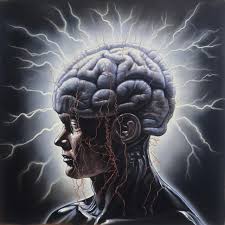Seizures
Seizures are sudden, uncontrolled electrical disturbances in the brain that can cause a variety of symptoms, from changes in behavior, movements, and feelings to loss of consciousness. Here’s a comprehensive guide on understanding seizures, their causes, types, prevention, detection, and proper first aid:

1. What Are Seizures?
Seizures are episodes of abnormal electrical activity in the brain that disrupt its normal functioning. Depending on the area affected and the type of seizure, symptoms can vary from brief lapses in attention to intense convulsions.
2. What Causes Seizures?
Seizures can be triggered by a range of factors, including:
- Epilepsy (chronic seizure disorder)
- Head injuries or brain infections (e.g., meningitis, encephalitis)
- Stroke
- Genetic factors
- High fever
- Withdrawal from alcohol or drugs
- Electrolyte imbalances or low blood sugar
- Sleep deprivation and stress
3. Prevention of Seizures
- Medication Compliance
- Regular Sleep
- Avoid Triggers
- Healthy Lifestyle
- Managing Underlying Conditions
4. Different Types of Seizures
Seizures are categorized into generalized and focal (partial) seizures:
- Generalized Seizures: Involve both sides of the brain.
- Tonic-Clonic (Grand Mal): Intense convulsions and loss of consciousness.
- Absence (Petit Mal): Brief lapses in attention or staring.
- Myoclonic: Sudden, brief muscle jerks.
- Atonic (Drop Seizures): Sudden loss of muscle tone, causing falls.
- Tonic: Muscle stiffness, often leading to falls.
- Clonic: Rhythmic jerking movements.
- Focal (Partial) Seizures: Originate in one specific part of the brain.
- Focal Aware (Simple Partial): Consciousness is retained; can involve unusual sensations or movements.
- Focal Impaired Awareness (Complex Partial): Consciousness is affected; may involve confusion or repetitive movements.
5. How to Detect Seizures
- Medical History
- Electroencephalogram (EEG)
- Magnetic Resonance Imaging (MRI) or CT Scans
- Blood Tests
- Patient Journals
6. What to Do During a Seizure
If You Experience a Seizure:
- Try to stay calm and avoid any dangerous activities like driving or climbing.
- Alert someone nearby if you feel an aura or early signs.
- After the seizure, rest until you’re fully oriented.
7. What Not to Do After a Seizure
- Don’t Drive or Operate Machinery
- Avoid Physical Activity Immediately
- Don’t Drink Alcohol or Caffeine
- Don’t Skip Medication
8. What to Do if Someone Has a Seizure (First Aid)
- Stay Calm
- Protect from Injury
- Time the Seizure
- Turn on Their Side
- Loosen Tight Clothing
- Do Not Restrain
- Don’t Place Anything in the Mouth
After the Seizure:
- Check Responsiveness
- Stay with Them
- Offer Help
- Seek Emergency Help if Needed
When to Seek Medical Attention
- If a seizure lasts longer than 5 minutes.
- If a person has multiple seizures back-to-back.
- If they’ve never had a seizure before.
- If the seizure occurs after an injury or has caused an injury.
